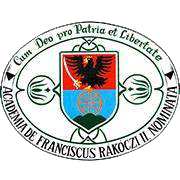Please use this identifier to cite or link to this item:
https://dspace.kmf.uz.ua/jspui/handle/123456789/3532| Title: | Кухня та піч традиційної закарпатської угорської селянської хати |
| Other Titles: | The kitchen and stove of a traditional Transcarpathian hungarian peasant house Az otthon szíve – a hagyományos ugocsai parasztház konyhája és tűzhelye |
| Authors: | Кейс Борнобаш Kész Barnabás Kész Margit Кейс Маргаріта |
| Keywords: | угорці Закарпаття;тридільна хата;сіни;кухня;вільний димар;піч;камін;тринога;дровниця |
| Issue Date: | 2022 |
| Type: | dc.type.researchStudy |
| Citation: | In Народознавчі зошити. 2022. № 5 (167). c. 1080-1091. |
| Series/Report no.: | ;№ 5 (167) |
| Abstract: | Резюме. Метою дослідження є визначити тип традиційного закарпатського угорського дому та кухні, а також окреслити історію розвитку кулінарного приміщення та його топкового обладнання, які відіграють центральну роль у житті
сім’ї, їх місцеві особливості, паралелі чи відмінності з іншими регіонами та народами. Об’єктом дослідження є народна архітектура, а предметом — кухня, яка разом з піччю
та обладнанням утворює центральне та головне приміщення угорської селянської хати на Закарпатті. Крім принципу
історизму, методологічною основою дослідження є апробовані методи етнографії, такі як елементи ретроспективного,
типологічного, комплексного аналізу чи, наприклад, історичної реконструкції. Територіально дослідження охоплює
угорські та змішані села південно-західної частини Закарпаття, історичної Угочанської жупи, ахронологічно — першу половину ХХ ст., з деякими посиланнями на зміни, що
відбулися в другій половині ХХ ст. Крім опрацювання архівного матеріалу та етнографічної літератури, вихідним матеріалом дослідження стали новітні дослідження, виїзні аналізи авторів, фото та інші документи, глибинні інтерв’ю з
інформаторами. Abstract. The study of traditional folk architecture is one of the popular areas in ethnography. This task is especially relevant in regions that ethnographers consider to be relatively white spots, such as the multiethnic Transcarpathia, which has historically belonged to several state formations. Ukrainians, Hungarians, Romanians, Slovaks, Germans and other ethnic groups who have lived here in friendship for centuries mutually enrich each other's culture, creating unique examples of interethnic relations. In this paper, the authors made an attempt to document the traditional housing culture of the Hungarian rural population of Transcarpathia. The object of research is folk architecture, and the specific subject of the research is the kitchen, which together with the oven and equipment forms the central and main room of the Hungarian peasant house in Transcarpathia. The aim of this study was to determine the type of traditional Transcarpathian Hungarian house and kitchen, as well as to outline the history of culinary space and its heating equipment, which play a central role in a family’s life, their local features, parallels or differences with other regions and peoples. Based on our main hypothesis, we suggested that in more remote villages of the region traces of archaic elements known in the material culture of different peoples and ethnic groups living at the confluence of the Great Alföld and Carpathians can still be found (open veranda, open chimney, fireplace, stove, etc.). In addition to the principle of historicism, the methodological basis of the study includes proven methods of ethnography, such as elements of retrospective, typological, comprehensive analysis or, for example, historical reconstruction. Territorially, the study covers Hungarian and mixed villages in the southwestern part of Transcarpathia, the historical Ugocha County, and chronologically — the first half of the XX century, with some references to changes that took place in the second half of the XX century. In addition to the study of archival material and ethnographic literature, the source material of the study was the latest research, field analysis of the authors, photos and other documents, in-depth interviews with informants. A meleg otthon, a családi tűzhely mindig is központi szerepet játszott az emberek életében. Ahogyan a főzés, sütés helyszíne fokozatosan különvált a pihenés, a szórakozás színterétől, illetve az élelmiszer tárolására szolgáló kamrától, úgy vált a kezdetben egyosztatú kunyhó a középkor végére kétosztatú (szoba+kamra), sőt háromosztatú (szoba+pitvar/konyha+kamra) paraszt lakóházzá, nem beszélve a módosabb rétegek lakhelyeiről. Ahogyan a különböző népek lakáskultúrája a párhuzamok, interetnikus kapcsolatok ellenére részleteiben különbözhetett egymástól, úgy egy nép – jelen esetben az általam kutatott kárpátaljai magyarság – lakóhelye, lakberendezése is falvanként, kistájanként némileg más és más lehetett. Az etnográfusok által leginkább kutatott időszak (a 19. század vége – a 20. század dereka) tárgyi kultúráján belül a magyar parasztháznak, a népi építkezésnek és lakberendezésnek, a magyar konyhának hatalmas szakirodalma van. Így a magyar néprajznak is az egyik legjobban, legmélyebben kutatott területe az építkezés. Felsorolni is hosszú lenne az ezzel foglalkozó kutatókat Herman Ottótól, Huszka Józseftől, Jankó Jánostól, Györffy Istvántól, Bátky Zsigmondtól, Cs. Sebestyén Károlytól, Viski Károlytól, Kós Károlytól kezdve Vajkai Aurélon, Gunda Bélán és Tálasi Istvánon, Bakó Ferencen, Tóth Jánoson, Mendele Ferencen, Gilyén Nándoron, Páll Istvánon, Dankó Imrén, Tóth Ferencen át Balassa M. Ivánig, Cseri Miklósig, Sabján Tiborig és másokig. |
| URI: | https://dspace.kmf.uz.ua/jspui/handle/123456789/3532 |
| ISSN: | 1028-5091 (Print) 2786-6866 (Online) |
| metadata.dc.rights.uri: | http://creativecommons.org/licenses/by-nc-nd/3.0/us/ |
| Appears in Collections: | Kész Barnabás Kész Margit |
Files in This Item:
| File | Description | Size | Format | |
|---|---|---|---|---|
| Kesz_B_Kesz_M_Kukhnia_ta_pich_tradytsiinoi_zakarpatskoi_uhorskoi_seliansk_khaty_2022.pdf | In Народознавчі зошити. 2022. № 5 (167). c. 1080-1091. | 523.37 kB | Adobe PDF | View/Open |
| Kesz_Barnabas_Az_otthon_szive_2022.pdf | In Jászkunság. A Jász-Nagykun-Szolnok Megyei Tudományos Egyesület Évkönyve. 2022. 9. évfolyam. pp. 276-289. | 2.08 MB | Adobe PDF | View/Open |
This item is licensed under a Creative Commons License





